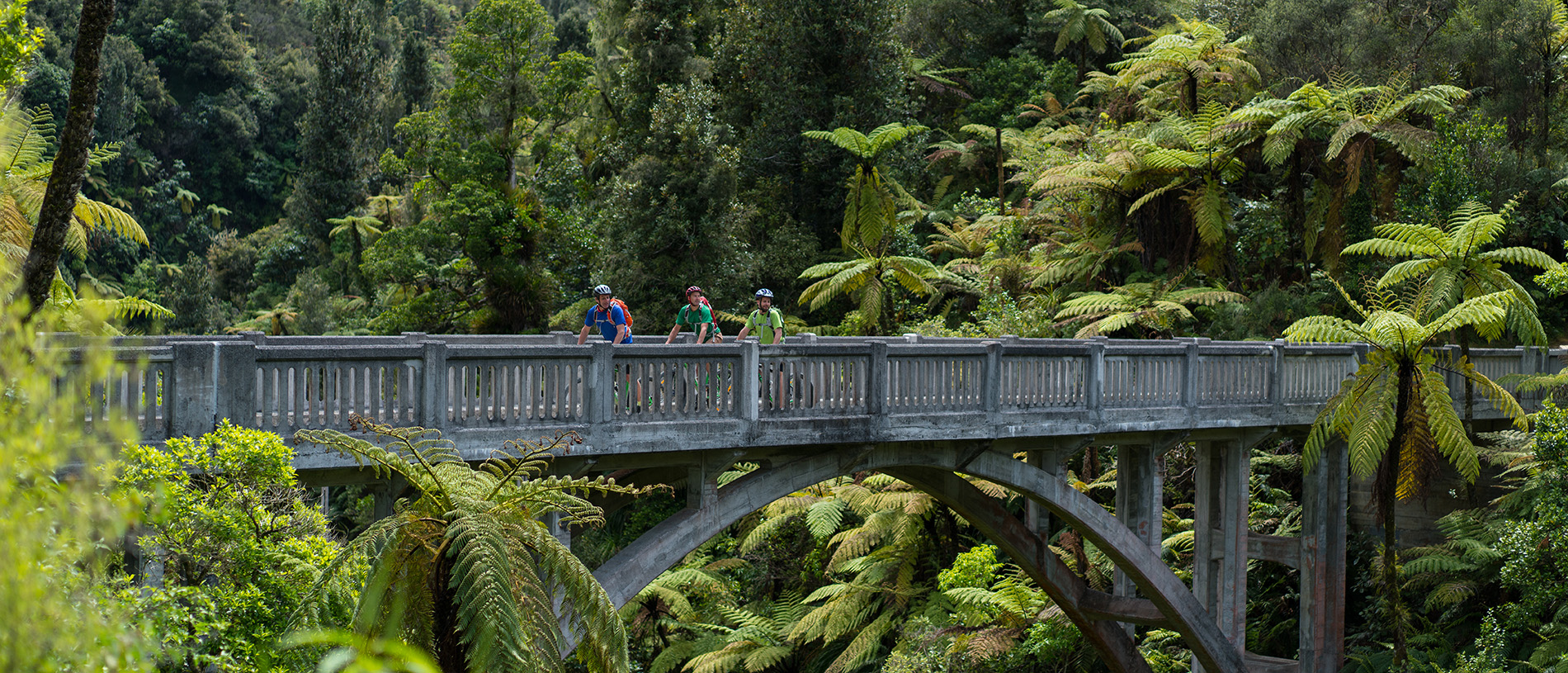
Bridge to Nowhere: stunning walking in the Whanganui National Park
Reach the enigmatic Bridge to Nowhere via the Kaiwhakauka Track or navigating the Whanganui River to the Mangapūrua Landing.

Trace elements and politicians have got a lot to answer for.
In 1919, the government decided to allot land to diggers who had returned from the First World War battlefields, as a way of getting them restarted on civvy street. The area it chose for this was the Mangapūrua Valley in the rugged, virgin-bush-clad interior of the lower North Island, handy to the Whanganui River. Forty families were packed off there. As their boats bore the returned soldiers, their families and their possessions upriver, with the gloomy bush crowding to the banks on either hand, they must have wondered what the hell they were doing.
Good question. The men toiled to clear their 450-hectare holdings, using axes, saws, fire and sheer hard work. The women set up a school in an abandoned house, and everyone got on with trying to live a normal life.
For a time, as pasture took root in the soil made fertile by the ashes of the rainforest, there was a glimmer of hope. But prices fell, and stock failed to thrive. It turned out the soil was as devoid of essential trace elements as the Mangapūrua settlement concept was empty of sense, and once the dump of nutrients from the burnoff had been depleted, the land was worse than marginal.
The government persisted in its misguided attempts to improve the lot of its old soldiers. Mindful of the access difficulties, with rain and rockfall frequently blocking the shingle tracks and carrying away the makeshift suspension bridge they used to reach Raetihi, it ordered the construction of a proper road, complete with a new concrete bridge.
By the time construction was completed in 1936, however, the Depression had bitten deep, and only three tenacious families clung on at Mangapūrua. The rest had simply walked off their farms, leaving the bush to reclaim the remnants of their houses, land and dreams of prosperity.
Yet another flood damaged the road in 1942, and the government refused to patch it up. Instead, it evicted the last three families, giving them a paltry £250 apiece in compensation. The road disappeared in the bush, and grasses and lichens soon colonised the span and the deck of the bridge.
And there it stands today, an incongruous reminder in the middle of the bush of the madness of the plan and the misery of its executors. It’s a pretty 40-minute walk from Mangapūrua Landing on the Whanganui River, or easily integrated into a two-day traverse of the Mangapūrua track.
It’s the grandest bridge in a tramping track you’ll ever see.